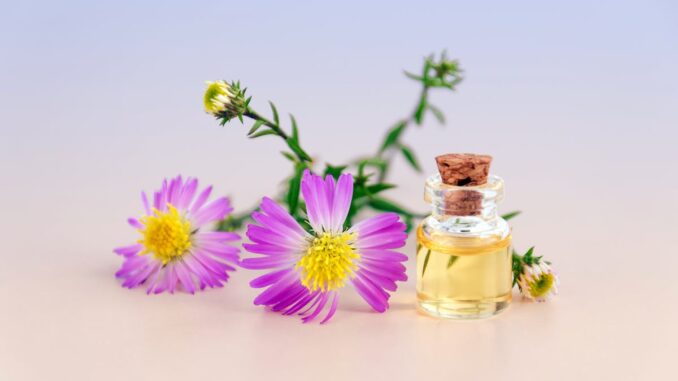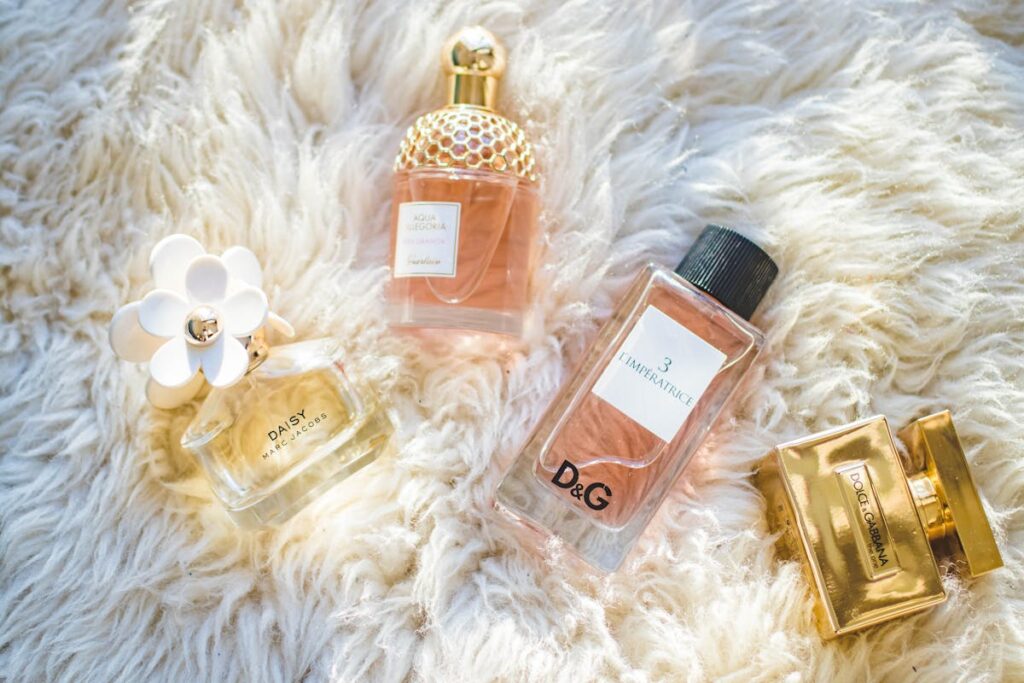
Perfumes have the power to improve one’s aura. They are effective in exuding confidence, charm, and beauty. When the markets of American perfumes and their advertising developed in the 1950s, there was a rising popularity of gendered differences in perfume. Due to this, some fragrances were displayed as only for males or females, forcing consumers to consider their options carefully. Feminine advertising became associated with floral scents, and men gradually began to get away from them. Since then, fragrance companies have taken the time and effort to specify whether their scents are unisex, masculine, or feminine.
Eau De Toilette is a perfume with a subtle aroma and a high alcohol concentration. It is also known as fragrant water. Usually, after taking a shower or shaving, it is applied directly to the skin. Traditionally, it is made out of different volatile oils and alcohol and based on ingredients such as Myrcia, geranium water, lavender water, lilac water, violet water, and ‘Eau de Bretfeld.’
Exploring Gendered Fragrance Norms
What does Eau de Toilette mean? The term “toilette” in French describes the ritual of getting ready for the day, including activities like cleansing, doing your regular beauty routine, and spritzing on your favorite fragrance. Eau de Toilette, which translates to “water of the toilette,” is a term for perfume water used for the body and hair. The awakening fragrance would make you immediately buy eau de toilette online.
- Ingredients and Composition
The ingredients and compositions of fragrances for men and women in eau de toilette are frequently different. Perfumes of men tend to have earthy and spicy components that express a feeling of power. On the other hand, the scents such as floral, fruity, and sweet notes like vanilla, rose, and jasmine are usually found in women’s perfumes and are linked to femininity.
A gender-biased nature of eau de toilette can be seen from the way it is blended. In general, tones like those found in flowers or fruits are light and sweet and seen as feminine, while those that are deep and dark, like those found in woody or musky scents, are seen to be more inclined toward the male side. But the smell itself is personal, and there aren’t any set norms or regulations to stick to it. Even when two people are wearing the same fragrance, they won’t smell the same since perfumes react differently on each individual.
But in contemporary fashion, these lines are blurred, with the same fragrance being worn by both sexes. This unisex fragrance uses a wide variety of compounds to attract more people.
- Packaging and Marketing
Perceptions of consumers are highly influenced by the packaging and marketing of men’s and women’s fragrances, in addition to scent composition. Men’s eau de toilette fragrances are presented in masculine, angular bottles with metallic or black embellishments that showcase concepts of strength and refinement. The packaging style of women’s eau de toilette fragrances is in bottles that are softer and curvier, along with feminine or floral patterns, highlighting elegance and attractiveness.
There is a different way to advertise frgarances for him and her. For men’s scents, advertisements include harsh landscapes and dapper characters, while those for women’s fragrances show romance and imagination. These marketing methods serve to further exaggerate gender stereotypes.

- Fashion and Personal Preference
Selecting a scent is a very personal decision that depends on a person’s personal preferences, recollections, and experiences. Yes, gender-specific standards may indeed be applied for eau de toilette fragrance by society, but many people—regardless of their gender—are attracted to scents that express their unique sense of style and identity. Also, people nowadays are happily accepting the opportunity to experiment with a broad range of fragrances, ignoring the lines between men’s and women’s fragrances.
- Cultural and Social Influence
There is a historical link of men’s fragrances to power, self-assurance, and refinement. These fragrances often reflect a sense of power and professionalism. Women’s perfumes are linked to refinement and femininity and these fragrances are created to convey multiple feelings, from joy and playfulness to grace and elegance.
A major role in reflecting gender disparity in society is played by gender identity and expectations of expression along with cultural conventions. Scents have been in use for a long time and they indicate social status and gender roles, with eau de toilette fragrances associated with masculinity or femininity.
However, a change is observed in the perceptions of smell with gender views. The development of unisex and gender-neutral scents and their high consumption have challenged the conventional ideas of femininity and masculinity. It indicates a greater appreciation of flexibility and variation in gender expression.
- Density and Length
Eau de Toilette fragrances for men have a stronger and more enduring scent. They contain base notes like tobacco and leather that help to create a flavor that lingers all day. Eau de Toilette, women’s fragrances, are designed to be lighter and more delicate by creating an emphasis on the top and middle notes to create a more appealing, delicate scent.
Men usually select their perfumes that go well with their attire and general style.
Whereas, in everyday situations, more contemporary alternatives work, and something like classic and timeless scents are ideal for formal events.
Perfumes for women complement their style preferences and artistic expression. For daytime events, women prefer to choose floral and fruity fragrances, that is, something light in smell, while in the evening gatherings, they go for smells that are deeper and more complex.
Conclusion
Within the perfume industry, scents are extremely important in defining a person’s identity and creating a lasting impression. In the end, as a smell enthusiast, you must follow your instincts. Customers have begun to use their sense of scent instead of their vision, even if the perfume industry still perpetuates the notion of gender. Consumers are beginning to understand that the concentration of the essential oils used in perfumes and colognes is the sole basic distinction between them. A large selection of eau de toilette fragrances is available for both men and women, but there is nothing wrong when a man likes fruity scents or when a woman wants to have a musk aroma rather than a floral scent. A perfume is a personal choice for everyone. To discover the best one that fits you, let your sense of smell guide you. for everyone.





